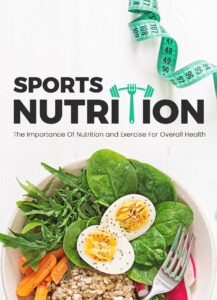How to Use a Foam Roller

Before diving in, please note: This post is for informational purposes only. If you’d like to know more about how we approach topics, feel free to check out our friendly Disclaimer Page.
Hey there, amazing readers! 🖐️ Just a quick note: yes, we know there are a lot of ads here. Trust us, we get it—it’s not the prettiest look, but they help us keep this blog alive and kicking. Those pesky little ads cover the costs of all the behind-the-scenes magic, from hosting and tech stuff to creating content we hope you’ll love.
We’re committed to delivering quality posts, and your support (even just sticking around despite the ads) means everything to us. So, bear with us, and thanks for helping us keep the good vibes rolling. Now, on to the fun stuff! 😉
TRANSLATE BUTTON AT THE END OF THE ARTICLE
Introduction to Foam Rolling
Foam rolling is a self-myofascial release technique that has gained popularity in recent years among athletes, fitness enthusiasts, and those seeking relief from muscle tightness and pain.
Using a foam roller involves applying pressure to specific areas of the body to help release tension, increase blood flow, and improve flexibility.
It is an effective way to mimic the effects of a deep tissue massage, but at a fraction of the cost.
Benefits of Foam Rolling
Foam rolling offers a myriad of benefits for the body, both before and after a workout.
Some of the key advantages include:
Improved Flexibility: Foam rolling helps to loosen up tight muscles and increase range of motion, allowing for better performance during exercise.
Enhanced Recovery: By reducing muscle soreness and promoting blood flow to the muscles, foam rolling can speed up the recovery process after a tough workout.
Injury Prevention: Regular foam rolling can help prevent injuries by keeping muscles supple and preventing knots from forming.
Better Posture: Foam rolling can target tight muscles that may be contributing to poor posture, helping to realign the body and alleviate discomfort.
Stress Reduction: The act of foam rolling can be a relaxing and meditative practice, helping to reduce stress and promote mental well-being.
Choosing the Right Foam Roller
When it comes to choosing a foam roller, there are several factors to consider.
The density of the foam roller is an essential consideration, as it will determine how intense the massage will be.
Beginners may prefer a softer foam roller, while those accustomed to foam rolling may opt for a firmer roller for deeper tissue work.
Additionally, the size and texture of the foam roller can also impact your experience.
A smooth foam roller is ideal for beginners, while those looking for a more intense massage may prefer a textured roller with ridges or knobs.
Precautions When Using a Foam Roller
While foam rolling can be incredibly beneficial, there are some precautions to keep in mind to ensure a safe and effective experience:
Avoid Bony Areas: Refrain from rolling directly over joints or bony areas, as this can cause discomfort or injury.
Use Proper Form: Maintain proper posture and alignment while foam rolling to avoid straining your muscles.
Start Slow: Begin with shorter rolling sessions and gradually increase the duration as your muscles adapt to the pressure.
Stay Hydrated: Drinking water before and after foam rolling can help flush out toxins released during the massage.
Listen to Your Body: If you experience sharp pain or discomfort while foam rolling, stop immediately and consult a healthcare professional.
How to Use a Foam Roller on Legs
Foam rolling the legs can help alleviate tightness in the quads, hamstrings, calves, and IT band.
Here’s how to effectively foam roll your legs:
Quads: Lie face down with the foam roller under your thighs.
Use your arms to support your weight as you roll from the hips to just above the knees.
Hamstrings: Sit with the foam roller under your thighs and hands behind you for support.
Roll from the hips to just above the knees.
Calves: Sit with the foam roller under your calves.
Cross one leg over the other to increase pressure as you roll from the knees to the ankles.
IT Band: Lie on your side with the foam roller under the side of your leg.
Use your top leg for support as you roll from the hip to just above the knee.
Discover "SUPERFOODS: The Key to Health and Balance🥗" 🌿🌺
How to Use a Foam Roller on Back
Foam rolling the back can help relieve tension in the muscles along the spine.
Here’s how to foam roll your back effectively:
Upper Back: Sit with the foam roller behind your upper back and cross your arms over your chest.
Lift your hips off the ground and roll from the base of your neck to the middle of your back.
Lower Back: Lie on your back with the foam roller under your lower back.
Bend your knees and roll from the base of your spine to the top of your glutes.
Foam Rolling Techniques for Shoulders
Foam rolling the shoulders can help release tension in the muscles surrounding the shoulder joint.
Here’s how to foam roll your shoulders effectively:
Anterior Deltoids: Lie face down with the foam roller under the front of your shoulders.
Roll from the armpits to the front of the shoulders.
Posterior Deltoids: Lie on your side with the foam roller under the back of your shoulders.
Roll from the armpits to the back of the shoulders.
Lateral Deltoids: Lie on your side with the foam roller under the side of your shoulders.
Roll from the armpits to the sides of the shoulders.
Foam Rolling for Arms and Chest
Foam rolling the arms and chest can help alleviate tightness in the muscles and improve flexibility.
Here’s how to foam roll your arms and chest effectively:
Biceps: Sit with the foam roller under your biceps.
Roll from the elbows to the shoulders.
Triceps: Lie face down with the foam roller under your triceps.
Roll from the elbows to the armpits.
Chest: Lie face down with the foam roller under one side of your chest.
Roll from the armpit to the center of the chest.
Repeat on the other side.
Foam Rolling for the Glutes
Foam rolling the glutes can help release tension in the muscles of the buttocks and hips.
Here’s how to foam roll your glutes effectively:
Piriformis: Sit with the foam roller under one side of your glutes.
Cross your leg over the other to increase pressure as you roll.
Gluteus Maximus: Sit on the foam roller with one side of your glutes.
Roll back and forth to target the entire glute muscle.
Incorporating Foam Rolling into Your Routine
To reap the full benefits of foam rolling, it’s essential to incorporate it into your regular routine.
Aim to foam roll for 10-15 minutes before a workout to warm up your muscles and improve flexibility.
After your workout, spend another 10-15 minutes foam rolling to aid in recovery and reduce muscle soreness.
Consistency is key, so try to foam roll at least 3-4 times per week to see the best results.
Tips for Effective Foam Rolling
To make the most of your foam rolling sessions, consider the following tips:
Breathe: Remember to breathe deeply and evenly as you foam roll to help relax your muscles.
Discover "Sports Nutrition: The Importance of Nutrition and Exercise for Overall Health 🥗🏋️"

Focus on Tight Spots: Spend extra time rolling over areas that feel particularly tight or sore.
Use Your Body Weight: Adjust the pressure by shifting your body weight onto the foam roller.
Stay Relaxed: Avoid tensing up while foam rolling, as this can hinder the effectiveness of the massage.
Combine with Stretching: Follow up your foam rolling session with some gentle stretching to enhance the effects.
Conclusion: Making the Most of Your Foam Roller
Foam rolling is a simple yet effective way to improve flexibility, reduce muscle soreness, and prevent injuries.
By following proper techniques and incorporating foam rolling into your regular routine, you can experience the many benefits it has to offer.
Remember to choose the right foam roller for your needs, take precautions to ensure a safe experience, and listen to your body throughout the process.
With consistency and dedication, foam rolling can become a valuable tool in your fitness and wellness arsenal.
So, grab your foam roller and start rolling your way to better health and performance!

The Enlightenment Journey is a remarkable collection of writings authored by a distinguished group of experts in the fields of spirituality, new age, and esoteric knowledge.
This anthology features a diverse assembly of well-experienced authors who bring their profound insights and credible perspectives to the forefront.
Each contributor possesses a wealth of knowledge and wisdom, making them authorities in their respective domains.
Together, they offer readers a transformative journey into the realms of spiritual growth, self-discovery, and esoteric enlightenment.
The Enlightenment Journey is a testament to the collective expertise of these luminaries, providing readers with a rich tapestry of ideas and information to illuminate their spiritual path.
Our Diverse Expertise 🌟
While our primary focus is on spirituality and esotericism, we are equally passionate about exploring a wide range of other topics and niches 🌍📚. Our experienced team is dedicated to delivering high-quality, informative content across various subjects ✨.
To ensure we provide the most accurate and valuable insights, we collaborate with trusted experts in their respective domains 🧑🏫👩🏫. This allows us to offer well-rounded perspectives and knowledge to our readers.
Our blog originally focused on spirituality and metaphysics, but we’ve since expanded to cover a wide range of niches. Don’t worry—we continue to publish a lot of articles on spirituality! Frequently visit our blog to explore our diverse content and stay tuned for more insightful reads.





